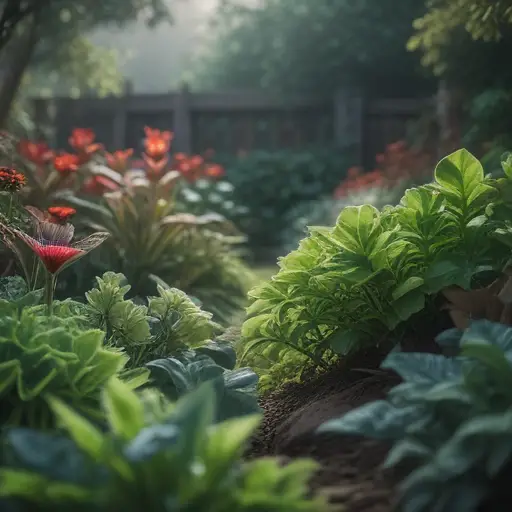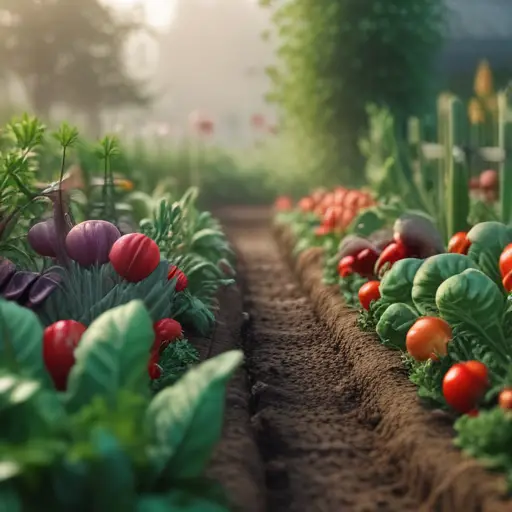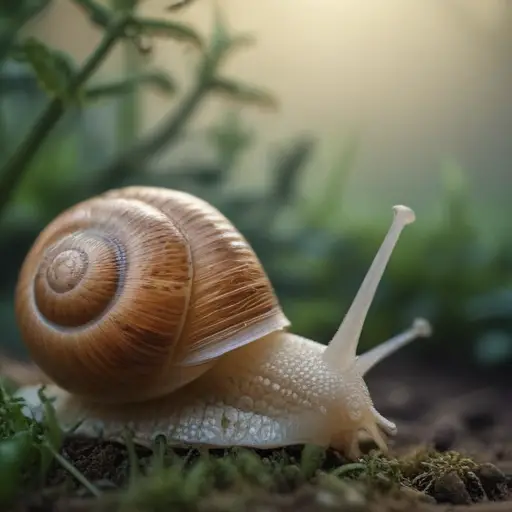Companion Planting: The Key to Successful Garden Growth
Companion Planting: Maximizing Garden Space
Companion planting is like the ultimate gardening buddy system. It’s all about pairing up plants that have each other’s backs, whether it’s repelling pests, attracting beneficial insects, or just providing some good old-fashioned moral support. Think of it as the plant version of a sitcom duo – peas and carrots, tomatoes and basil, marigolds and just about everyone. By strategically placing these dynamic duos in your garden, you can maximize your space and create a harmonious ecosystem where everyone thrives. Plus, it’s a great excuse to play matchmaker with your plants and watch them flourish together. Who knew gardening could be so entertaining?
The Benefits of Plant Pairing
Certain plants, such as marigolds, basil, and tomatoes, are known to grow well together because they have natural pest-repelling properties. For example, marigolds emit a scent that deters pests like nematodes, while basil can help repel mosquitoes and flies. Planting these companion plants together can help create a more balanced and healthy garden ecosystem.
Pairing plants in the garden is like creating a dream team of greenery. Not only do companion plants help each other out, but they also boost each other’s growth and flavor. It’s like having a built-in support system right in your backyard. From deterring pests to improving soil health, these plant partnerships are the ultimate power couple. So, next time you’re planning your garden layout, consider the benefits of plant pairing and watch your garden thrive like never before. Who knew that a little plant matchmaking could lead to such a bountiful harvest?
Creating a Harmonious Plant Community

Creating a harmonious plant community in your garden is like orchestrating a symphony of colors, scents, and flavors. By carefully selecting plants that complement each other, you can cultivate a thriving ecosystem where each member plays a vital role. From nitrogen-fixing legumes to pest-repelling herbs, every plant brings something unique to the table. Just like in a close-knit neighborhood, these plants work together to support and nourish one another, creating a balanced and sustainable environment.
When planning your garden layout, consider the needs and preferences of each plant to ensure they are compatible with their neighbors. Some plants, like tomatoes and basil, have a natural affinity for each other and can enhance each other’s growth and flavor. Others, like marigolds and nasturtiums, act as natural pest deterrents, protecting their plant companions from unwanted visitors. By strategically pairing plants based on their beneficial relationships, you can create a harmonious plant community that thrives with minimal intervention.
In addition to promoting plant health and productivity, creating a harmonious plant community can also enhance the aesthetic appeal of your garden. Mixing different colors, textures, and heights can create a visually stunning landscape that is both functional and beautiful. Imagine a garden bursting with vibrant blooms, lush foliage, and a symphony of scents that tantalize the senses. By carefully selecting plants that not only grow well together but also complement each other visually, you can create a garden that is a feast for the eyes as well as the palate.
Furthermore, fostering a harmonious plant community can have positive ripple effects beyond your garden borders. By supporting a diverse array of plant species, you can attract beneficial insects, birds, and other wildlife that contribute to a healthy and thriving ecosystem. Pollinators like bees and butterflies are essential for plant reproduction, while predatory insects help keep pest populations in check. By creating a welcoming environment for these beneficial creatures, you can promote biodiversity and create a sustainable garden that is in harmony with nature. In this way, your garden becomes not just a place of beauty and productivity but also a sanctuary for all living beings to thrive together in harmony.
Successful Plant Combinations for Beginners
Did you know that planting marigolds alongside tomatoes can help to repel pests such as nematodes and whiteflies, while also attracting beneficial insects like ladybugs and bees? This companion planting technique can help to improve the overall health and yield of your tomato plants!
For beginners looking to dip their toes into the world of companion planting, some successful plant combinations to consider include pairing tomatoes with basil, marigolds with vegetables, and beans with corn. These classic combinations are not only easy to grow but also provide mutual benefits for each plant. Tomatoes and basil enhance each other’s flavors and deter pests, while marigolds act as natural pest repellents for a variety of vegetables. Beans and corn, on the other hand, form a symbiotic relationship where beans fix nitrogen in the soil, benefiting the corn plants. By starting with these tried-and-true combinations, beginners can set themselves up for a successful and fruitful gardening experience.







